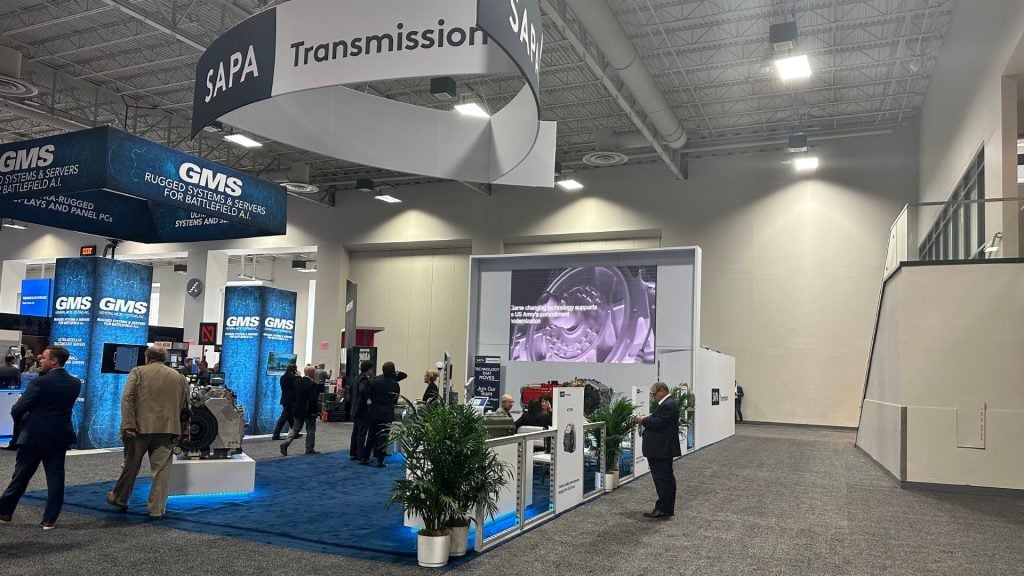
Introduction
The exhibition landscape is rapidly evolving, and emerging technologies are playing a critical role in transforming how brands design their exhibits. From immersive experiences to real-time analytics, these innovations are reshaping the way exhibitors engage with audiences, creating more dynamic and memorable environments. Here’s how cutting-edge technologies are revolutionizing exhibition design and what it means for the future of trade shows.
1. Virtual and Augmented Reality: Immersive Engagement
Virtual Reality (VR) and Augmented Reality (AR) are becoming game changers in exhibition design. These technologies offer interactive experiences that captivate audiences and immerse them in a brand’s story like never before.
- Virtual Reality: VR allows attendees to explore virtual worlds, showcasing products or services in a fully immersive environment. Whether it’s a virtual product demo or a virtual tour of facilities, VR brings the brand closer to the customer.
- Augmented Reality: AR overlays digital elements in the physical world, allowing exhibitors to enhance their booths with interactive visuals. Attendees can engage with product details, explore 3D models, or even play AR-based games that increase booth dwell time.
2. Artificial Intelligence (AI) and Data-Driven Personalization
AI technology is enabling exhibitors to offer more personalized and engaging experiences. By leveraging AI, brands can create tailored interactions based on attendee behavior and preferences.
- AI Chatbots: Many exhibits now feature AI-powered chatbots that assist attendees, answering questions, providing product recommendations, and guiding visitors through the booth without the need for a human operator.
- Data Analytics: AI can analyze real-time data on attendee engagement and behavior, helping exhibitors adjust their strategies on the fly. This technology allows exhibitors to measure foot traffic, identify hot spots, and track interactions, leading to smarter decisions and a better ROI.
3. 3D Printing: Customization on Demand
3D printing is pushing the boundaries of exhibit customization by allowing exhibitors to create unique booth elements and product prototypes on demand.
- Rapid Prototyping: Exhibitors can use 3D printing to produce accurate product prototypes during the event, offering attendees a hands-on experience with new products before they are launched.
- Custom Exhibit Components: 3D printing enables highly customizable booth designs that reflect the brand’s identity. From intricate structures to personalized promotional items, 3D printing adds a creative, on-demand edge to exhibits.
4. Interactive Touchscreens and Kiosks
Interactive touchscreens and digital kiosks have become essential tools for engaging attendees, offering hands-on experiences that captivate and inform.
- Product Demos: Digital touchscreens allow attendees to explore a product’s features interactively, offering a more engaging experience than traditional static displays.
- Self-Service Kiosks: These kiosks provide easy access to product information, services, and event schedules. Attendees can explore content at their own pace, making it easier for them to engage with the brand.
5. Projection Mapping: Dynamic Visual Displays
Projection mapping technology is transforming exhibit spaces by turning ordinary surfaces into extraordinary displays. Using light and motion, projection mapping can create dynamic visuals that bring an exhibit to life.
- Immersive Displays: Exhibitors can project large-scale visuals onto walls, floors, or 3D objects, creating a compelling, immersive experience that draws attention and elevates the brand’s story.
- Customizable Content: Projection mapping allows for easily customizable content, enabling exhibitors to change visuals on demand or create different experiences for various segments of their audience.
6. Sustainable Technology: Green Design Solutions
Emerging technologies are also contributing to the sustainability movement in exhibitions. Brands are increasingly using eco-friendly materials and energy-efficient solutions to reduce their environmental footprint.
- LED Lighting and Solar Panels: Many exhibitors now opt for LED lighting and solar energy solutions to power their booths, offering both sustainability and cost savings.
- Sustainable Materials: Exhibitors are adopting recyclable materials and modular designs that reduce waste and minimize the environmental impact of their displays.
7. IoT and Smart Exhibits: Real-Time Interaction
The Internet of Things (IoT) is making its mark on exhibit design by enabling real-time data collection and smart interactions between visitors and the booth environment.
- Connected Devices: IoT-enabled devices can collect real-time data from attendees, providing exhibitors with insights into visitor behavior, preferences, and engagement levels.
- Smart Badges: Attendee badges equipped with IoT technology allow exhibitors to track visitor interactions, providing valuable data on which aspects of the exhibit are most effective and engaging.
Conclusion
Emerging technologies are revolutionizing the way exhibits are designed and experienced. From immersive VR and AR experiences to AI-powered personalization and real-time data analytics, these innovations are helping exhibitors engage more deeply with their audience.
As technology continues to evolve, so will the possibilities for creating memorable, impactful exhibitions that resonate long after the trade show ends. Embracing these technologies isn’t just an option—it’s the future of exhibition design.


 Global
Global Europe
Europe

